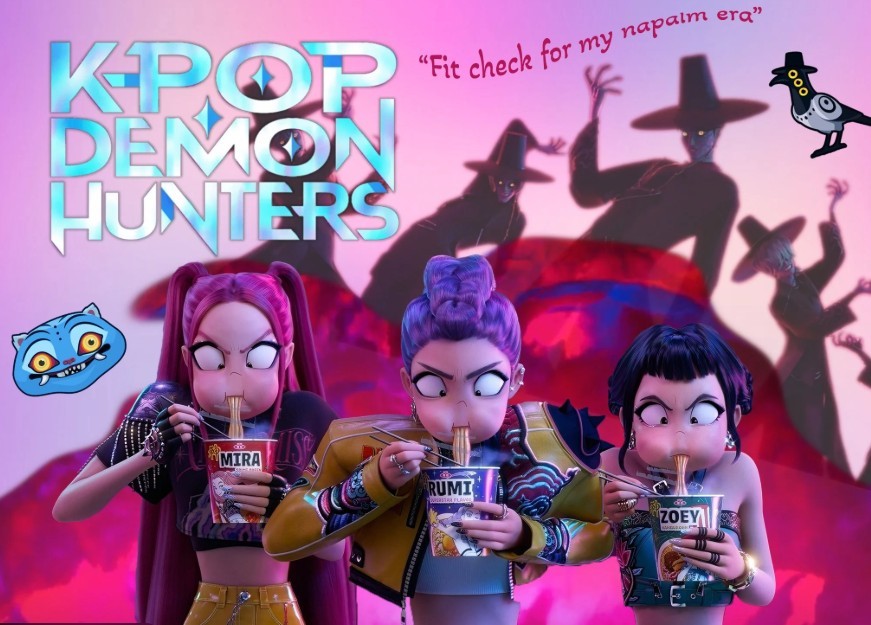Top 30 Weirdest Movies of All Time That You Must Watch Right Now
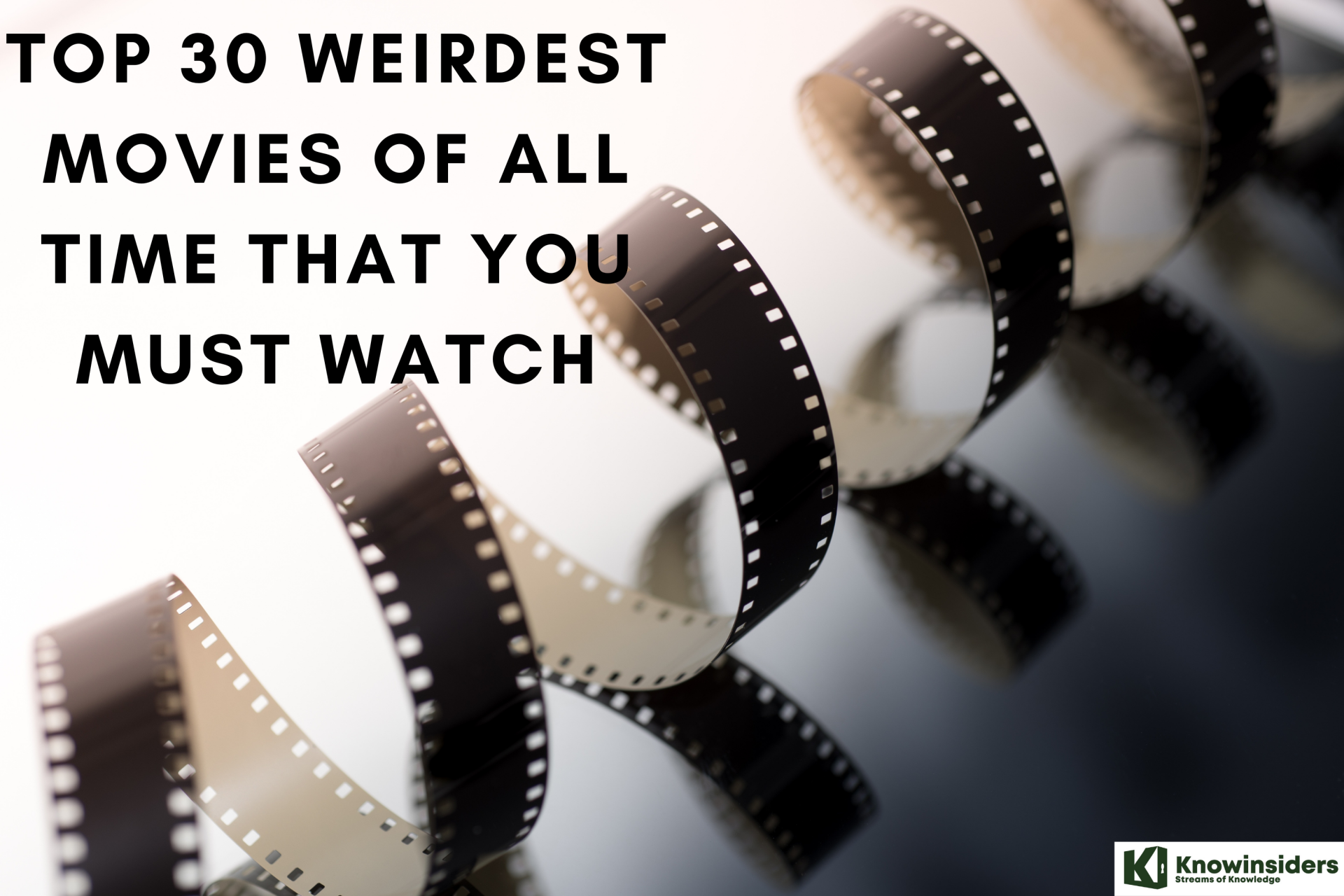 |
| Top 30 Weirdest Movies Of All Time That You Must Watch Right Now |
Since its inception, cinema has been the perfect medium for exploring and depicting flights of fancy and the language of dreams. Cinema is a visual art. It encompasses, and necessarily must encompass, all that we can imagine. Many filmmakers across the years have attempted to revolutionise and transfigure the ways in which movies can speak to us.
In Le voyage dans la lune, Georges Méliès imagined an expedition to the moon; The German Expressionists created stark visions of humanity’s underbelly; and in 1929, Luis Bunuel created one of cinema’s greatest dreams, Un Chien Andelou, a surrealist masterpiece that would change the language of cinema.
The notion of ‘weirdness’ is utterly subjective, of course; but there are films that undeniably do something different, push the boundaries of filmmaking, narrative and conventional ideas of storytelling and morality.
Filmmakers who are considered ‘weird’ or avant-garde often simply create visions of things we have never seen before, or present images and concepts that we thought we understood in wholly new ways. Cinema is capable of showing us things that are impossible, awakening our minds to new ways of thinking, and also taking us on strange journeys to places that we could never imagine.
Top 30 Weirdest Movies Of All Time That You Must Watch Right Now
1. The Holy Mountain
1973 | 1 hour 54 minutes | Directed by Alejandro Jodorowsky
Starring Alejandro Jodorowsky, Horacio Salinas, Zamira Saunders
In the first ten minutes of The Holy Mountain, the holy grail (ahem!) of ‘midnight movies’, Jodorowsky deals with Christ, the Bible, Christianity and religious symbolism in a whirlwind of exceptional blasphemy. Some of the imagery from these ten minutes would render The Holy Mountain deserving of a place on the list alone. But the film continues. For almost 80 minutes, never letting up. It was not a movie made to watch with your parents. Or anybody, for that matter.
The Holy Mountain is, predominantly, a comedy, an indictment of our society and a dream of something otherwordly. Jodorowsky was a spiritual wanderer; his movies are a mish-mash of the pseudo-religious sensibilities that became prevalent during the 60s and 70s, just as midnight movies gained an enormous subterranean cult following and the countercultural revolution was in full flower.
2. Inland Empire
2006 | 3 hours | Directed by David Lynch
Starring Karolina Gruszka, Grace Zabriskie, Laura Dern
Where would a list of weird movies be without the high priest of American weirdness? Lynch’s movies are dreamscapes, in which the world of fairy-tales become twisted and broken. Lynch understands the visions of apparent bliss that humans have erected around themselves, and throughout his career sought to deconstruct these illusions in vicious fashion. From Blue Velvet to Mullholand Drive, his great theme is the darkness that lies beneath the façade of everyday civilisation.
Inland Empire is his last full-length movie (after this, major studios refuse to finance any of his projects) and also his most ‘Lynchian’, in that it recreates the terrors of a lucid nightmare and mass psychosis. It concerns the mental decay of young actress, who suddenly comes to believe that she is the character she is portraying in movie (or perhaps a series of characters) and delves into a dark, symbolic world of crumbling identity and human-like rabbits.
3. Koyaanisqatsi
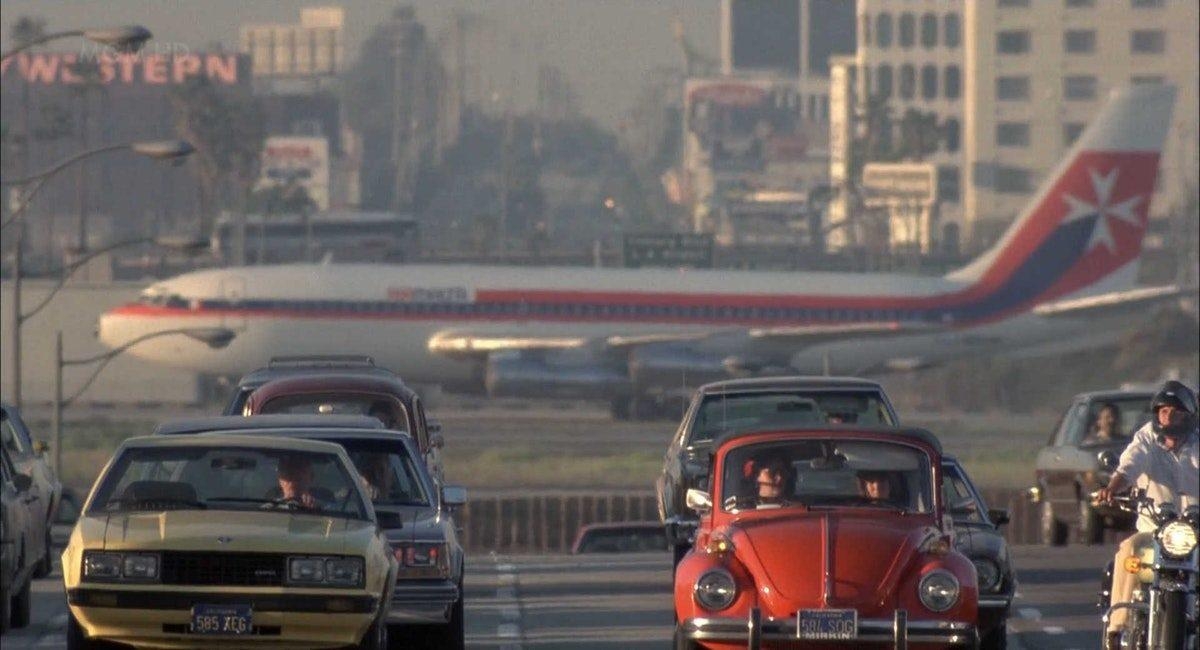 |
| Photo: forbes |
1982 | 1 hour 26 minutes | Directed by Godfrey Reggio
Starring Edward Asner, Pat Benatar, Jerry Brown, all in archive footage
In the Native American Hopi language, “Koyanaanis” means turmoil and “qatsi” means life. The film’s subtitle is ‘Life out of balance’. Godfrey Reggio, the director, intended the film to be an environmental statement, a testominal of our earth and humanity’s essential separation from nature. It is like a reverse time-lapse of Genesis, portraying the vast sanctity of nature slowly imbued and poisoned with human interference and involvement.
After the elemental beginnings, our strange and distant civilisation is depicted in all its intentional isolation from nature. And throughout it all is Phillip Glass’ hypnotic ambient soundtrack, less music than the sounds of our creation and eventual destruction, as filtered through the vast subconscious of the human race.
Reggio followed the film with Powaqqatsi (Life in Transformation) and Naqoyqatsi (Life as War) to complete one of the most startling trilogies in all of film.
4. L’age D’or
1930 | 1 hour 3 minutes | Directed by Luis Bunuel
Starring Gaston Modot, Lya Lys, Caridad de Laberdesque
L’age D’or (The Golden Age) is a surrealist satirical comedy talking about the insanities of the modern world (that is, the modern world of the 1930s), the hypocrisy of social norms, and the value system of the Catholic Church. L’age D’or is predominantly a silent movie with only title cards telling you what you are about to see, so don’t expect long explanatory dialogues here. And although this movie has a certain plot, the fact the very same plot was partly written by Salvador Dali might give you a good notion of its surreal qualities. Besides the fact that this film is widely regarded as one of the key pieces of surreal cinema, it is ultimately a movie about love and the human condition.
5. Black Moon
1975 | 1 hour 40 minutes | Directed by Louis Malle
Starring Cathryn Harrison, Therese Giehse, Alexandra Stewart
One of the auteurs of the French New Wave, Louis Malle was a prolific and diverse filmmaker. He is rarely mentioned in the same breath as Godard or Truffaut, but his output was immensely varied and interesting.
Black Moon is a true forgotten avant-garde curio from the 1970s, proof that it was a time of sheer experimentalism, when even great filmmakers could fund their wildest flights of fancy. Malle never shied away from controversial subject matter, and Black Moon is an overt comment on gender and sexuality. It exists in the realm of dreams, and attempts to pay homage to the great surrealist films of the 1930s.
Malle himself has said that the film is a homage to Alice in Wonderland; the plot, such as it is, mimics Carroll’s novel considerably, concerning a woman who seeks to escape to a quiet country house from an apocalyptic war between the sexes. Here she is confronted by a series of increasingly bizarre and ethereal happenings, and eventually breast-feeds a unicorn.
6. Weekend
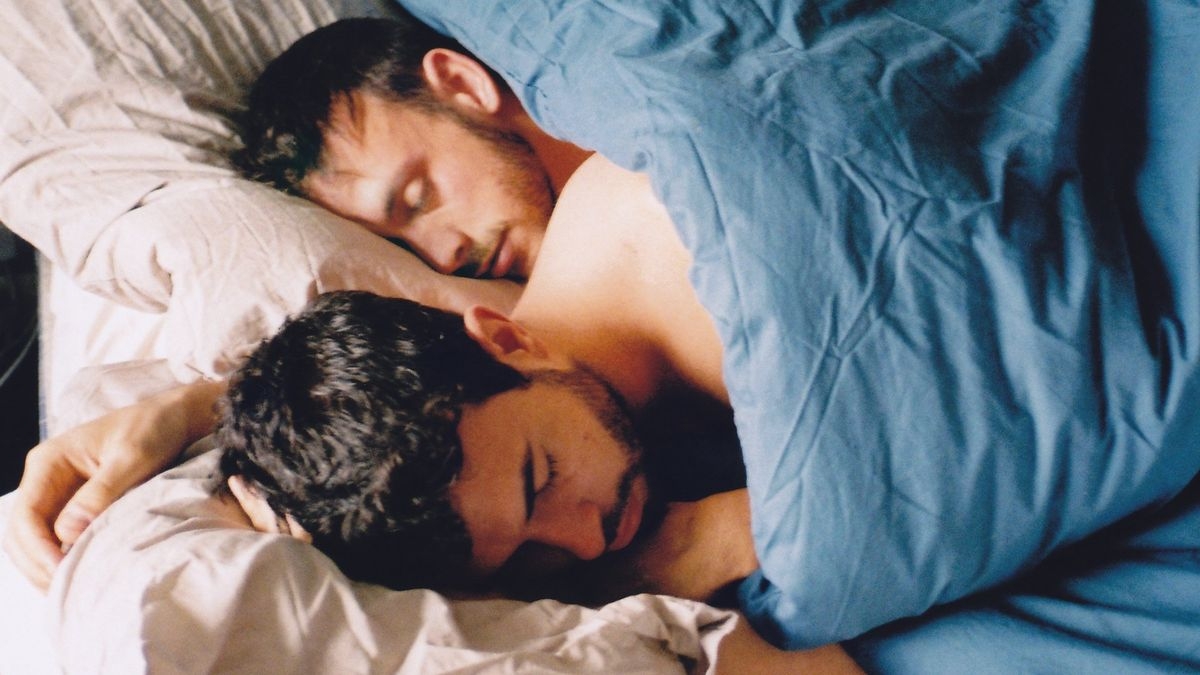 |
| Photo: out1filmjournal |
1967 | 1 hour 45 minutes | Directed by Jean Luc-Godard
Starring Mireille Darc, Jean Yanne, Jean-Pierre Kalfon
Like many of the films on this list, it is about the collapse of ordinary society into a kind of primordial existence, and a savage indictment of bourgeois sensibilities. Many have called it a document of revolution, which in 1967 seemed a distinct possibility; this anarchism extends beyond society and politics, and encompasses cinema itself, which Godard declares ‘dead and buried’ the end of the film.
Indeed, this is the film that called an end Godard’s attempts at ‘storytelling’; following 1967, he would turn to more experimental documentary-making and attempt to critique the vast history of filmmaking in his seminal Histoire du cinema. As such, it is easy to see the culmination of a life’s work in Weekend; it certainly embodies and distils the 13 films that came before into a statement of closure and finality. It also contains the world’s finest traffic jam scene.
7. The City Of Lost Children
1995 | 1 hour 52 minutes | Directed by Marc Caro and Jean-Pierre Jeunet
Starring Ron Perlman, Daniel Emilfork, Judith Vittet
The City of Lost Children is one of the strangest movies I have ever seen. Having said that, it is also a wonderful movie. This movie came to me as a recommendation from my sister. She said I had to see this movie. She is rarely wrong when it comes to recommending movies for me to watch. It is a French movie, and I recommend watching it with the subtitles. It is so much better that way. I am not sure if they ever dubbed it into English, but I am not a huge fan of dubbed movies. It ruins it, and I feel that it cheapens it a little bit. Ron Perlman (of Sons of Anarchy) stars in this movie, though his dialog in the movie is very limited.
The movie is about a scientist who kidnaps children. He uses these children in a mad experiment meant to slow his aging, by stealing their dreams. It is a very strange movie with a lot of unusual characters and even stranger scenery. It is a dark, disturbing movie, but also a heartwarming movie about a man searching for his brother. It is a violent, and often disturbing movie filled with horrific images. It is visually stunning, however, and the script is very well written and incredibly acted, even by the youngest cast members. I highly recommend this movie to anyone who is a fan of fantasy movies, dark movies or foreign horror movies.
8. Sweet Movie
1974 | 1 hour 38 minutes | Directed by Dušan Makavejev
Starring Carole Laure, Pierre Clementi, Anna Prucnal
Sweet Movie is as debased and morally soiled as they come. A beauty queen and a ship’s captain occupy their time through child killing, coprophagia and ritual murder, much of it while glazed and smeared in syrup, treacle or other confectionary (hence the title).
Like Mysteries of the Organism (see above), however, Sweet Movie isn’t an exercise in pointless immorality. Much like Pasolini’s cited intention with Salo, Makavejev is indicting authoritarianism of all kinds, as well as satirising movie-making in general.
The violence of the 20th century ensured that human life, in certain parts of the globe, was worth nothing; Makavejev depicts the human body, the very thing that had become disposable in his own country, in all its functional glory. That this is so shocking illustrates why von Trier’s The Idiots is so outrageous: it confronts us with human behaviour and imagery that is nonetheless true.
9. Conspirators Of Pleasure
 |
| Photo: harvardfilmarchive |
1996 | 1 hour 25 minutes | Directed by Jan Švankmajer
Starring Petr Meissel, Gabriela Wilhelmova, Barbora Hrzanova
Fetishism is not new to cinema. Bunuel has depicted it on a grand scale since the 1930s, and Cronenberg detailed the erotic and the horrific in 1996’s Crash. Horror also takes its inspiration from the world of fetishism, most notably the Hellraiser series. Yet, here we have a strangely personal vision of fetishism. The film essentially concerns the strange and intimately private rituals of preparation people enact to fulfil their private, deepest obsessions and desires.
It is a film about sexual objects that are not themselves overtly sexual. These are dreams and cravings that never see the light of day, and Svankmajer revels in the absurdity and liberation of portraying purely visual fetishes (the film is wordless) with oblique romanticism, obviously recognizing the emancipation involved in the fulfilment of sexual desire, however odd or abnormal.
10. Enter The Void
2009 | 2 hours 41 minutes | Directed by Gaspar Noe
Starring Nathaniel Brown, Paz de la Huerta, Cyril Roy
Gasper Noe’s Irreversible is one of the most controversial films ever made, beginning with the bludgeoning to death of a man with a fire extinguisher and containing an extended ten-minute rape-scene that is essentially unwatchable. It is an extreme movie, one designed to shock and disgust. Eight years later, Noe made Enter the Void, a kind of pseudo-spiritual sequel to Irreversible, that offers psychological shudders to the purely physical shocks of its predecessor.
Enter the Void portrays a man’s voyage following violent death in a neon-soaked, pornographic Tokyo of the future. His death is not a religious experience; more an ascension to another plane, a la Space Odyssey, where he can observe the brutality and sorrow of his life, and its aftermath, without the constraints of space-time.
The film is an ambient sound-scape, full of epileptic camerawork and filmed predominantly through the eyes of the dead man, who descends through Hellish visions of an underworld that all-too-readily resembles our own. Noe is not a director for the faint of heart; his films are likely to invoke convulsions, or deep bouts of melancholy.
Yet Enter the Void has a beating heart that Irreversible, purely reptilian and distant, did not. It is a film that pushes the boundaries of cinematography and experiments with the effects of imagery on the mind and the subconscious.
11. Gummo
1997 | 1 hour 29 minutes | Directed by Harmony Korine
Starring Nick Sutton, Jacob Sewell, Lara Tosh
Gummo is the story of a group of dead-beats who live in a town destroyed by a tornado. With society already crushed and broken, they pass the time by huffing household cleaning products, killing cats, avoiding molestation and engaging in generally unpleasant behaviour.
The film, like many on the list, is more a series of fragments and occurrences, existing under the canopy of an overarching theme of moral and ethical decay; many of the town’s inhabitants are involved in behaviours that would be entirely unacceptable in normal society. Korine revels in the putridness and self-awareness of it all, following these characters as others would great historical figures.
12. On The Silver Globe
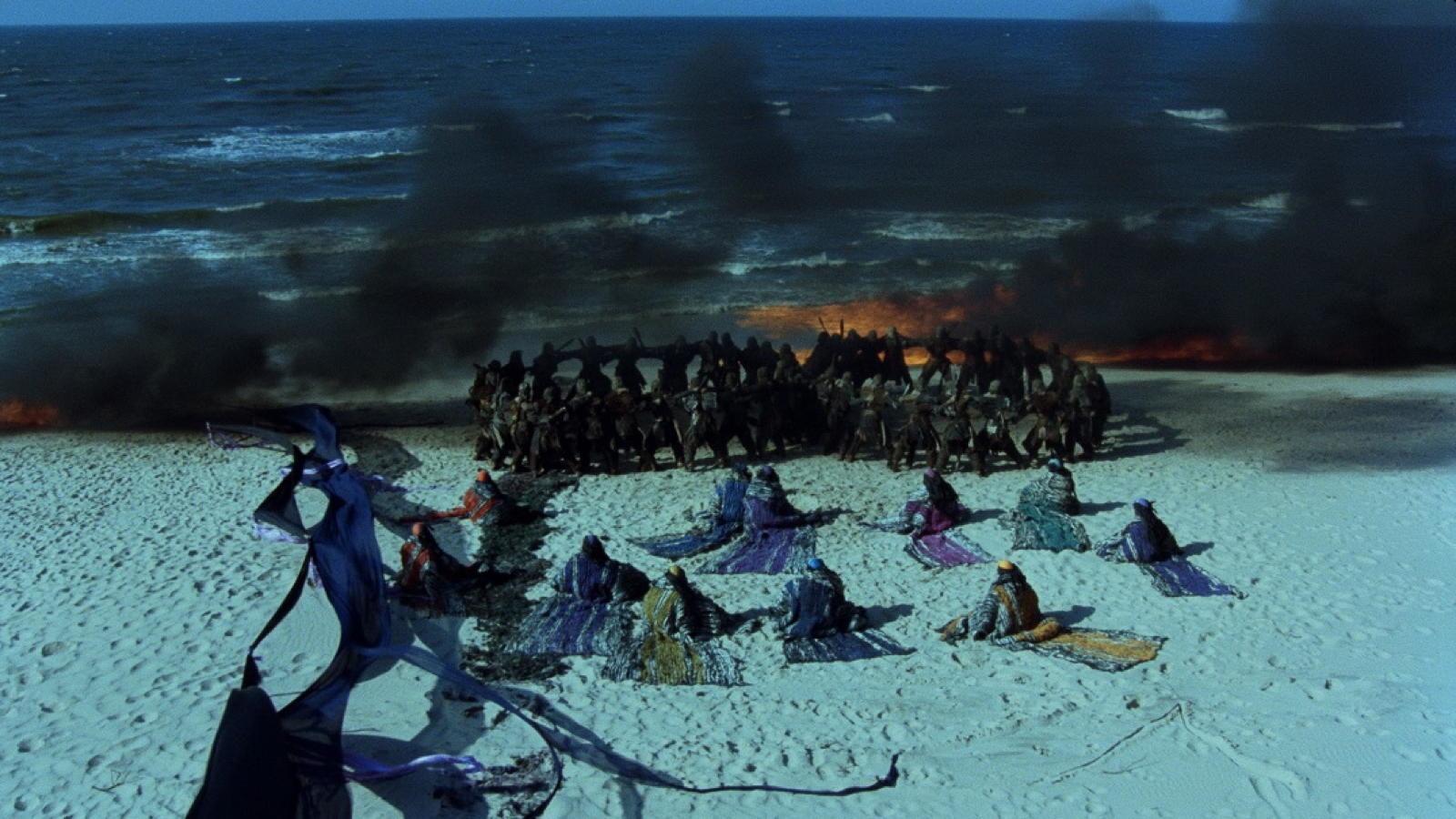 |
| Photo: filmlinc |
1988 | 2 hours 46 minutes | Directed by Andrzej Zulawski
Starring Andrzej Seweryn, Jerzy Trela, Grazyna Dylag
The story itself is a kind of Biblical allegory, and concerns humanity’s attempts to settle another planet, and the cosmological and humanistic epiphanies that come from leaving our terrestrial home.
‘Moon-children’ of astronauts who visit the moon form an increasingly paganistic society that survives for many generations, idolising and worshipping original humans who arrive as prophetic visitations. When an astronaut appears and fails to help the Children win a war against the brutal Szerns, telepathic half-bird men who enslave the ‘Moon-children’, he is crucified for his failure to fulfil the prophecy.
If this sounds strange, and somewhat incomprehensible, it is. But On the Silver Globe is also the greatest science fiction movie you have never seen.
13. Videodrome
1983 | 1 hour 27 minutes | Directed by David Cronenberg
Starring James Woods, Debbie Harry, Sonja Smits
Beginning with Shivers in 1975, Cronenberg had become the preeminent North American embodiment of pure horror. His run of films in the late 1970s and 1980s are some of the finest, most audacious horror movies ever made. Videodrome is one of the movies that appears on many ‘weird’ lists, but its most famous sequences are deserving of praise.
The basic premise of Cronenberg’s classic Videodrome is worryingly plausible in the internet age: a man stumbles upon a television channel that apparently broadcasts real-life human torture and sadism, and becomes increasingly caught up in a web of strange hallucinations and paranoid conspiracies attempting to discover its signal.
In the age of Video Nasties and the ‘snuff film’, when the new-fangled availability of home video spawned all manner of urban myths and legends, (Charlie Sheen once took a copy of notorious Japanese splatter-horror Flowers of Flesh and Blood to police in the belief that it depicted a real murder), Videodrome preyed upon fears that were very real, and did it with Cronenberg’s trademark strangeness.
14. The Lobster
2015 | 1 hour 59 minutes | Directed by Yorgos Lanthimos
Starring Colin Farrell, Rachel Weisz, Jessica Barden
The Lobster is a surreal black comedy dystopian film with a completely unique plot. It goes like this - in this dystopian present, every single person is transported to a hotel full of other singles. Each of them is given 45 days to find a match, and if they do not succeed, they are turned into an animal of their choice. The leading duo tries quite hard to form a relationship but ultimately ends up in a guerilla platoon hiding in the woods and resisting this institution. Also, you should expect a massive plot twist right at the end. And while this description of The Lobster’s plot might give you an idea of a ridiculous movie, it is, in fact, a deep exploration of the ridiculous social norms in turn. And you know, it is a Yorgos Lanthimos movie so expect no less than perfection.
15. Pi
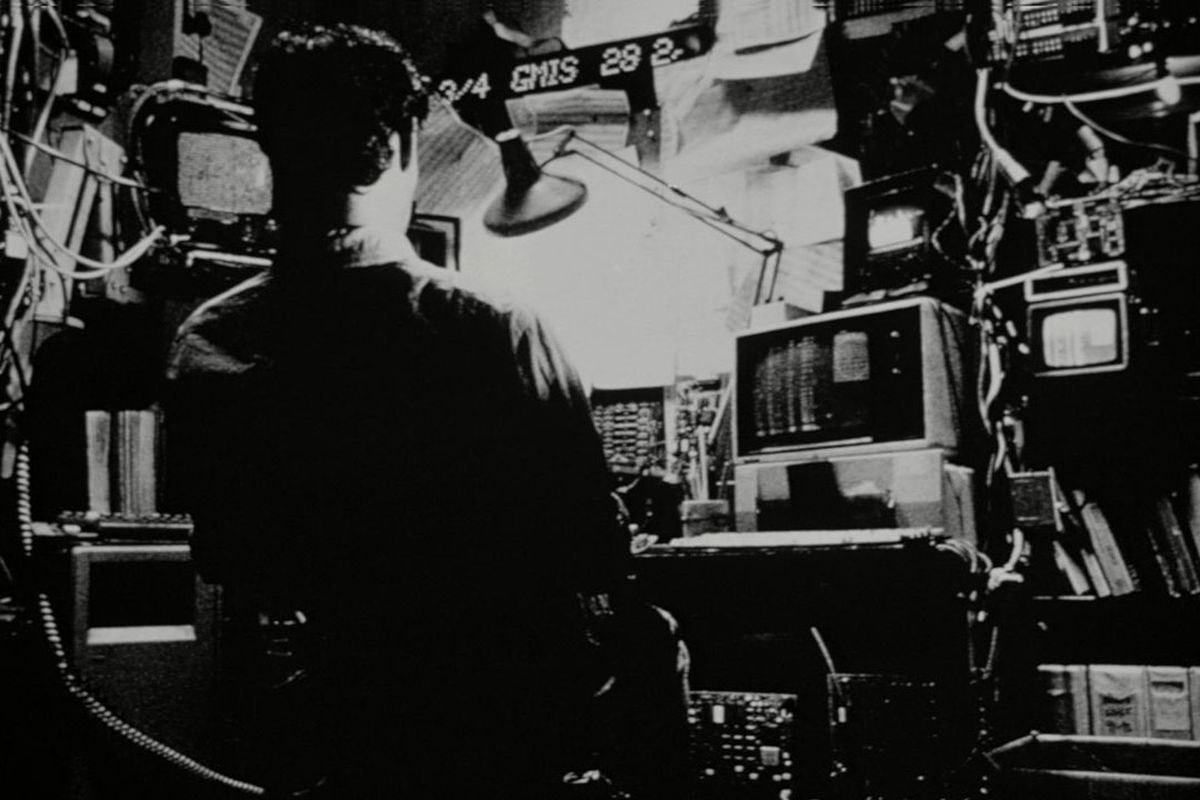 |
| Photo: polygon |
1998 | 1 hour 24 minutes | Directed by Darren Aronofsky
Starring Sean Gullette, Mark Margolis, Ben Shenkman
Pi is a portrait of madness, of crumbling certainties and the slow disintegration of a human mind. It is the story a man attempting to find mathematical structure in an otherwise chaotic universe, tapping into our eternal fears of death, the afterlife and the omnipresence of God.
Aronofsky is known for his dark dreams of addiction and obsession; Requiem for a Dream is one of the most harrowing films of all time, and he bucked the trend for Oscar nominations with his dark, Argento-inspired Black Swan. But Pi is something else, a low-budget thrill-ride that shoots for a sheer cerebral experience of paranoia, terror and insanity. It was made on a shoestring, but looks absolutely fantastic, with clear black and white cinematography, suffocating camera angles and bursts of synaptic violence.
16. Taxidermia
2006 | 1 hour 31 minutes | Directed by Gyorgy Palfi
Starring Csaba Czene, Gergely Trocsanyi, Marc Bischoff
Taxidermia is a surrealist comedy-drama film that retells Hungary’s history from the Second World War to this day, employing a very metaphorical way of storytelling. It’s told through stories of three men - a pervert, an aspiring speed-eater, and a passionate taxidermist. Though at times verging on the gory side, Taxidermia still manages to touch serious subjects with wit and unique imagination. So, try it if you have the stomach for it!
17. WR: Mysteries Of The Organism
1971 | 1 hour 24 minutes | Directed by Dušan Makavejev
Starring Milena Dravic, Ivica Vidovic, Jagoda Kaloper
Communism, and the deterioration of the Eastern bloc throughout the latter half of the 20th century, was a source of material ripe for filmmakers, many of whom were indicted or persecuted for their art. And none is so remarkable or original as Makavejev’s Mysteries of the Organism, a blending of socialism, sex and comedy that works as a kind of anti-documentary against the state.
It came under direct criticism in the west as well as the east upon release, with many declaring that it was a ‘crime against film’, or an aesthetic backwater. It is, indeed, a startlingly unique piece of cinema, made in a nation where politics was crumbling apart and terrible violence was on the immediate horizon.
The film concerns a quest for a perfect orgasm, and cleverly depicts and ridicules authority figures in the vulnerability of sexual activity. It is initially the story of a Freudian scholar, who declares that the quest for sexual pleasure is the ‘only source of happiness’, and then commences to illustrate this notion in truly surreal fashion, with ‘shopping channel’ style vignettes, sex education classes that go hilariously awry, and wanton violence of all kinds.
18. Holy Motors
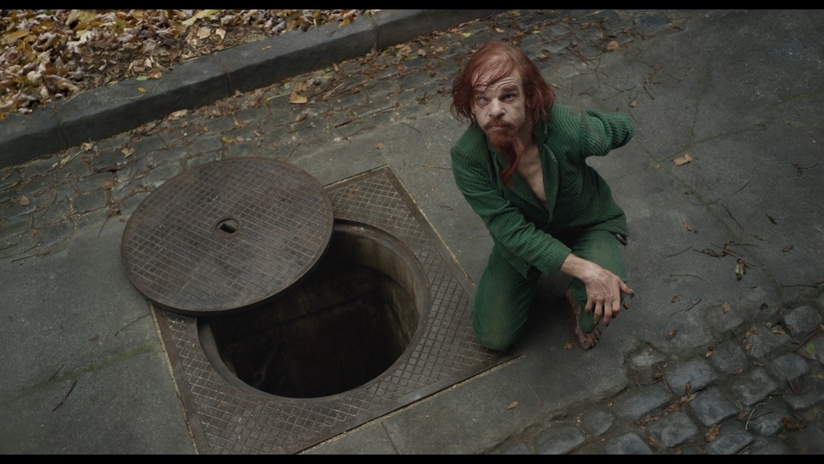 |
| Photo: filmgrimoire |
2012 | 1 hour 55 minutes | Directed by Leos Carax
Starring Denis Lavant, Edith Scob, Eva Mendes
Holy Motors is a fantasy drama film that follows Mr. Oscar on one day in his life. The viewer is led to think that Mister Oscar is an actor - he’s transported all around Paris in a limousine, and before disembarking in each new location, he changes his costume. There are nine appointments waiting for Mr. Oscar - from playing the part of a family man to an assassin to a beggar and a monster. However, no audiences or camera crews are anywhere to be seen. Holy Motors received universally positive reviews, with the critics praising its mesmerizing strangeness and spellbinding visuals.
19. Tetsuo
1989 | 1 hour 7 minutes | Directed by Shin’ya Tsukamoto
Starring Tomoro Taguchi, Kei Fujiwara, Nobu Kanaoka
Tetsuo appeared at a time when the Japanese film industry had hit a road block; the great masters such as Ozu, Mizoguchi and Kurosawa were either dead, or past making films, and the halcyon days of J-Horror and Studio Ghibli were still in the future. Much of Japanese cinema was relying on shock and controversy to gain exposure; the notorious faux-snuff Guinea Pig films were made during this period. Enter Shinya Tsukamoto, the physical embodiment of the cult director.
Tetsuo is an anxiety attack, a dream of a post-technological world where man and machine have become inextricably entwined in some kind of sexual nightmare. It concerns the creation of grotesque human hybrids, often with overly exaggerated carnal organs, and an apocalyptic world consumed by technology and our own creations.
20. Funky Forest
2005 | 2 hours 30 minutes | Directed by Katsuhito Ishii, Hajime Ishimine, and Shunichiro Miki
Starring Andrew Alfieri, Hideaki Anno, Moyoco Anno
Funky Forest is a surreal anthology comedy film composed of several storylines, some of which coincide, most of them thoroughly comical. These non-sequiturs largely revolve around a character known as Guitar Brother, his older brother, and their portly Caucasian sibling. At first, Funky Forest makes no sense at all; however, with each minute, you grow to like, and later to fully enjoy, the sensation of the unbelievable, comprised of various skits, gags, commercials, and all the crazy stuff you could think of.
21. The Rocky Horror Picture Show
 |
| Photo: imdb |
Starring: Tim Curry, Susan Sarandon, Barry Bostwick
Rocky Horror Picture Show brings its quirky characters in tight, but it's the narrative thrust that really drives audiences insane and keeps 'em doing the time warp again.In this cult classic, sweethearts Brad (Barry Bostwick) and Janet (Susan Sarandon), stuck with a flat tire during a storm, discover the eerie mansion of Dr. Frank-N-Furter (Tim Curry), a transvestite scientist. As their innocence is lost, Brad and Janet meet a houseful of wild characters, including a rocking biker (Meat Loaf) and a creepy butler (Richard O'Brien). Through elaborate dances and rock songs, Frank-N-Furter unveils his latest creation: a muscular man named "Rocky."
22. Fantastic Planet
Starring: Eric Baugin, Gérard Hernandez, Hubert de Lapparent, Jean Topart, Jean Valmont, Jennifer Drake, Michèle Chahan, Sylvie Lenoir, Yves Barsacq
This is an amazing and highly original animated film about life on another planet. There are various species of exotic extraterrestrials, some who enslave the others. We are treated to some complex views of the different societies, and the life and death struggles involved.
23. Brazil
Starring: Jonathan Pryce, Robert De Niro, Kim Greist, Michael Palin, Katherine Helmond, Bob Hoskins, Ian Holm
Low-level bureaucrat Sam Lowry (Jonathan Pryce) escapes the monotony of his day-to-day life through a recurring daydream of himself as a virtuous hero saving a beautiful damsel. Investigating a case that led to the wrongful arrest and eventual death of an innocent man instead of wanted terrorist Harry Tuttle (Robert De Niro), he meets the woman from his daydream (Kim Greist), and in trying to help her gets caught in a web of mistaken identities, mindless bureaucracy and lies.
24. Being John Malkovich
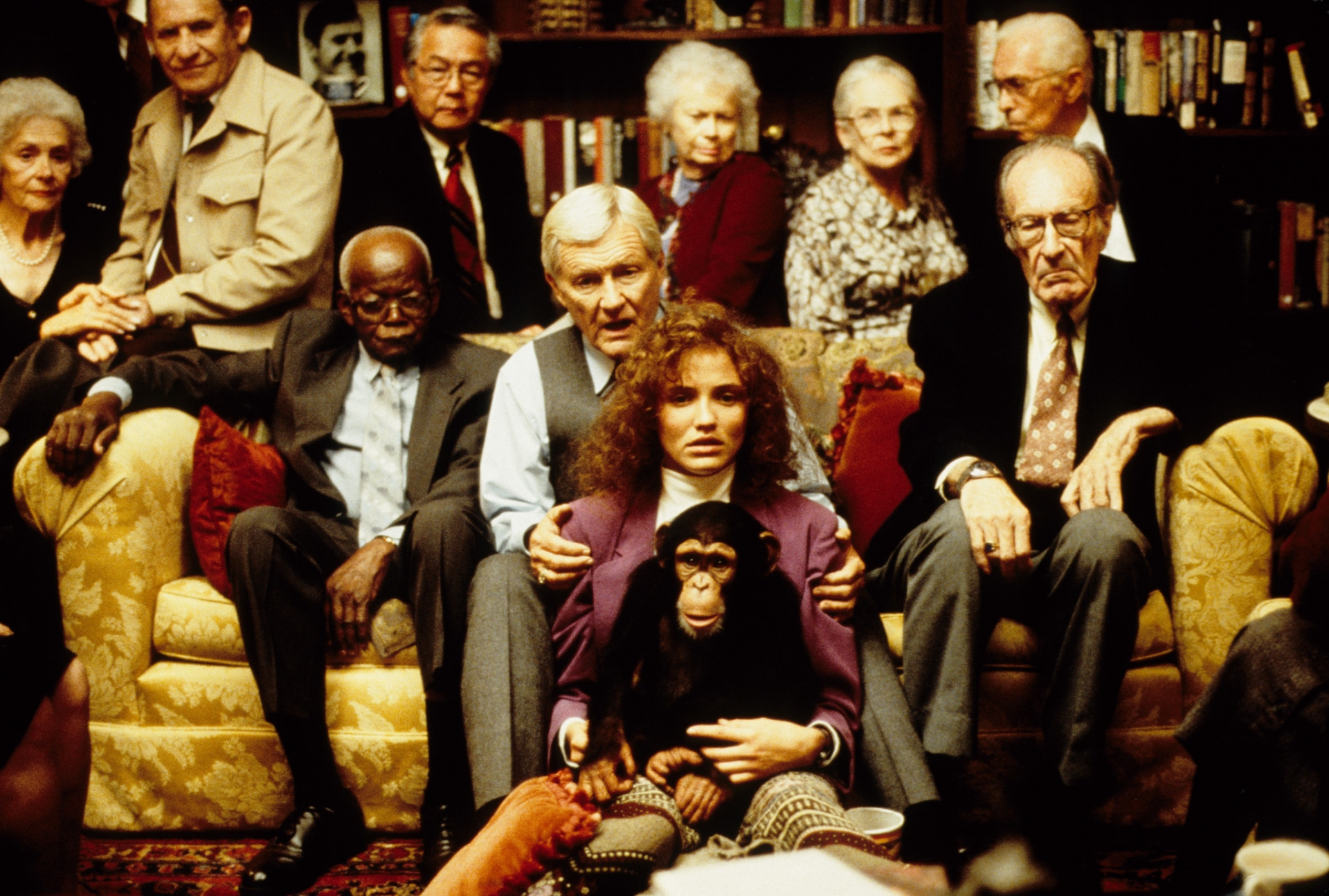 |
| Photo: imdb |
Starring: John Cusack, Cameron Diaz, Catherine Keener, Orson Bean, Mary Kay Place, John Malkovich
Being John Malkovich has to be one of the all-time weirdest movies ever made. Aspiring puppeteer Craig Schwartz discovers a door that opens into a portal into actor John Malkovich's mind. He soon turns his discovery into a money-making opportunity, selling the privilege to be Malkovich for 15 minutes at $200 a pop. From there, things just get progressively more strange...
Take your pick. The whole premise is wonderfully bonkers. However, a particularly delightful one is when John Malkovich learns about the portal into his own head and goes through himself.
25. Tommy
Starring: Ann-Margret, Elton John, Eric Clapton, Jack Nicholson, John Entwistle, Keith Moon, Oliver Reed, Paul Nicholas, Robert Powell, Roger Daltrey
The movie's purpose and achievement would be hard to figure out on the basis of what its makers say about it. Pete Townshend, who wrote the original album for The Who, says Tommy is an attack on the hypocrisy of organized religion. Ken Russell, who's made a specialty of films about musicians (Tchaikovsky, Mahler, and Liszt), says Tommy is the greatest work of art the twentieth century has produced. He was almost certainly misquoted. What he meant to say was that it was a heaven-sent opportunity for him to exercise his gift for going too far, for creating three-ring cinematic circuses with kinky sideshows.
26. Suspiria
Starring: Johnson, Mia Goth, Angela Winkler, Ingrid Caven, Tilda Swintons
Luca Guadagnino’s “Suspiria” isn’t so much a remake of the 1977 Dario Argento horror classic as it is a seriously insane (and seriously serious) expansion on the original. The two films share a setting, a few character names and a basic premise—that a prestigious German dance academy is a front for a witches coven, because of course it is—and that’s about it.
Parents need to know that Suspiria, a remake of the classic 1977 horror movie, stars Dakota Johnson and is from Call Me by Your Name director Luca Guadagnino. Expect extreme blood and gore, with lots of scary stuff, deaths, stabbing, slicing, and brutal insanity. There are also references to upsetting real-life events going on at the time (1977 Germany), including bombings and people being shot in the head. There are multiple instances of both male and female full-frontal nudity, and language includes uses of "f--k," "c--t," "ass," and "damn." Main characters smoke cigarettes, a character smokes a pipe, and social drinking is shown. The film is quite long and very serious, but its striking, unsettling, nightmarish imagery is sure to impress mature horror fans.
27. Eraserhead
 |
| Photo: thedissolve |
Starring: Allen Joseph, Charlotte Stewart, Jack Fisk, Jack Nance, Jean Lange, Jeanne Bates, Judith Roberts, Laurel Near, Thomas Coulson, V. Phipps-Wilson
Henry (John Nance) resides alone in a bleak apartment surrounded by industrial gloom. When he discovers that an earlier fling with Mary X (Charlotte Stewart) left her pregnant, he marries the expectant mother and has her move in with him. Things take a decidedly strange turn when the couple's baby turns out to be a bizarre lizard-like creature that won't stop wailing. Other characters, including a disfigured lady who lives inside a radiator, inhabit the building and add to Henry's troubles.
28. Man Bites Dog
Cast: Remy Belvaux, Benoit Poelvoorde, Andre Bonzei
The activities of rampaging, indiscriminate serial killer Ben (Benoît Poelvoorde) are recorded by a willingly complicit documentary team, who eventually become his accomplices and active participants. Ben provides casual commentary on the nature of his work and arbitrary musings on topics of interest to him, such as music or the conditions of low-income housing, and even goes so far as to introduce the documentary crew to his family. But their reckless indulgences soon get the better of them.
29. Swiss Army Man
Swiss Army Man is a 2016 American comedy-drama film written and directed by Dan Kwan and Daniel Scheinert. Hank (Paul Dano) is a man who is attempting suicide after being lost on an island, when he sees a corpse wash ashore (Daniel Radcliffe). He develops a type of friendship with the dead body and discovers that he can manipulate the cadaver like a Swiss Army knife and ends up slowly reanimating him from the dead.
30. Rubber
Starring Stephen Spinella, Roxanne Mesquida, Jack Plotnick, & Wings Hauser
Directed by the French musician/filmmaker Dupieux (who, by the way, went by the sobriquet Mr. Oizo back when his single "Flat Beats" and his Muppety sidekick Flat Eric were an international pop-culture phenomenon), Rubber is a road movie in the most literal sense. It's also a horror film, a critique of cinema past and present, an absurdist satire of traditional film tropes, an homage to David Cronenberg's Scanners, a comeback for Eighties icon Hauser, and a feature-length avant garde film unlike any other. It is, in effect, a movie-house meta mirror, warped and weird, strange but true (except when it isn't). It's whatever you want it to be, which doesn't necessarily make it a great movie (although it contains moments of greatness), but it is – by virtue of its premise alone – boldly unique. "All great films, without exception, contain an important element of no reason," explains Spinella's deadpan desert cop Lt. Chad in the film's intriguing, fourth-wall-shattering prologue. "In the excellent Chainsaw Massacre by Tobe Hooper," he elucidates, "why don't we ever see the characters go to the bathroom or wash their hands? Absolutely no reason." The answer to the unasked question here is: because life itself is filled with no reason.
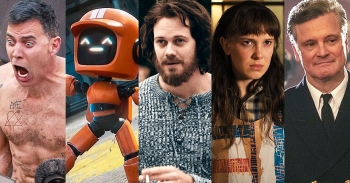 Full List of New Movies & Shows on Netflix US This Week 2-8 May, 2022 Full List of New Movies & Shows on Netflix US This Week 2-8 May, 2022 Netflix US released more than 60 new movies and shows this week from 2 to 8 May 2022. |
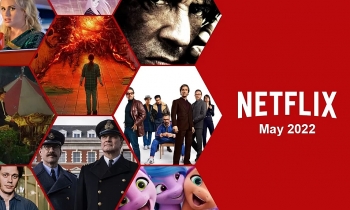 Top 200+ Best New Movies in May 2022 in Netflix, HBO, Amazon Prime, Hulu, Disney+, Paramount+ Top 200+ Best New Movies in May 2022 in Netflix, HBO, Amazon Prime, Hulu, Disney+, Paramount+ Find out the Top 200+ and Full List of the Best New Movies in May 2022 that coming out in Netflix, HBO, Amazon Prime, Hulu, ... |
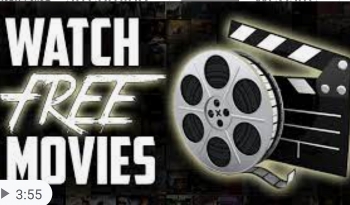 Top 25+ Totally Free Sites to Watch Movies Online Top 25+ Totally Free Sites to Watch Movies Online Find out the best and totally free websites to watch movies online from arond the world. |




